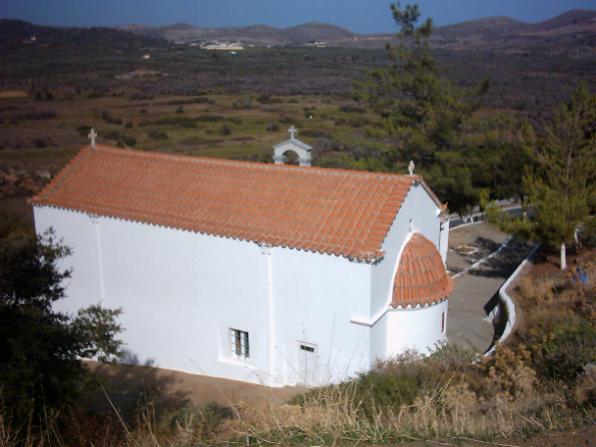
A church on the way to the Lasithi Plain.
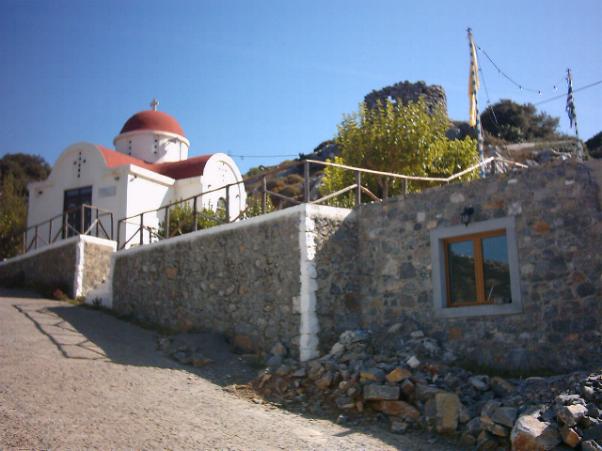
A church an what's left of an old windmill on the Lasithi Plain.
| The days of glory are gone for the windmills on the Lassithi plain, and the reason to visit it should be the trip that takes you there and the nice views that you get along the way. If you're expecting a large amount of working windmills than you are going to be disappointed (you must go to my country, Holland, if you want to see those ;), because I don't believe any of them is working anymore. The villages along the route, like for instance Tzermiado, and the really old stone windmills and churches that you will pass along the way are very attractive though, and worth to take a look at. |
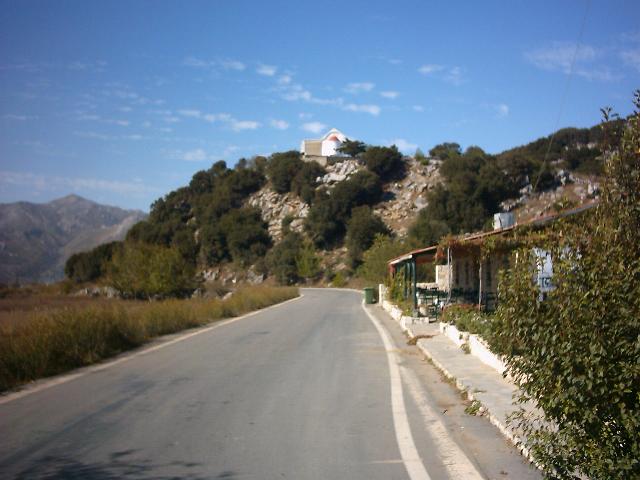
A church on top of a hill.
| The fertile soil of the Lassithi Plateau is due to alluvial run-off from the mountains when the snow melts in the spring. The ditches on the plateau were installed by the Venetians in 1631 when they wanted to insure a good harvest. The irrigation was handled by the many visible windmills seen in the plateau. Most of these have been abandoned for the more efficient electrical pumps. |
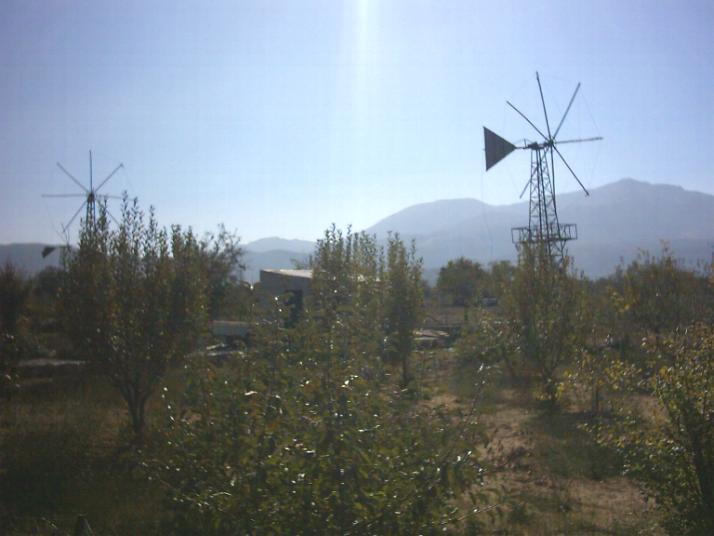
The remains of the former glory of the windmills.
| The main crops of the plateau are potatoes and apples. There are also many almond trees which blossom in late January (the Brides of Winter) giving the plateau a wonderful appearance. |
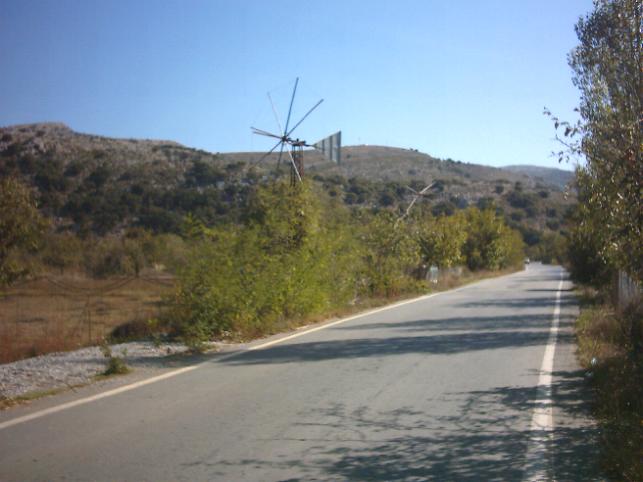
Another picture of the plain.
| People have inhabited Lassithi since Neolithic times (6000 B.C.) except for a period of 200 years during Venetian rule. The Venetians could not control the inhabitants of Lassithi because of its position in the mountains, so, once the people were relocated, they forbade the plateau to be inhabited under penalty of death. You may circle the plateau, visiting its villages along a paved road. |




